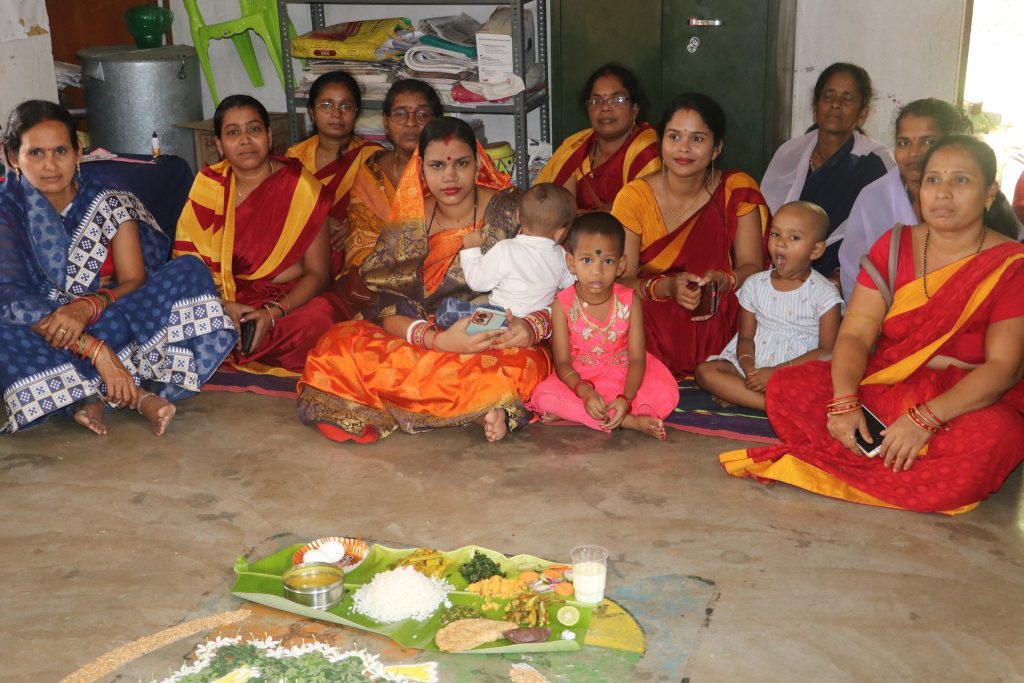Odisha Millet Mission: Climate resistant step for food security

Photo credit Odisha Millet Mission (The Ministry of Women and Child Development celebrated the fifth ‘Poshan Pakhwada' from 20th March to 3rd April 2023 with various activities nationwide. This initiative aims to raise awareness on malnutrition and promote healthy eating habits)
By Pradeep Kumar Panda
Bhubaneswar, April 4: History of millet is as old as the food history of human civilisation. There is evidence of millet cultivation in the Korean Peninsula dating back to the Middle Jeulmun Pottery Period (around 3,500–2,000BC).
In India, millets have been mentioned in some of the oldest Yajurveda texts, identifying foxtail millet (priyangava), Barnyard millet (aanava) and black finger millet (shyaamaka), thus indicating that millet consumption for human food is as old as Indian Bronze Age (4,500BC).
It’s mentioned in the Bible as one of the grains used to make bread. In ancient China, millet was one of five sacred grains and the Chinese believed that it was brought from the heavens by Houji or “Lord Millet,” a culture hero worshiped as the founding ancestor of farming.
In Europe, millet formed an important part of the daily diet during the Roman Empire, however lost relevance during Middle Ages in the name of inferior foods and poor men’s foods. Martin Jones, in his research work “Origin and Spread of Millets” notes that millets became common in North China heartland around 7500 years ago and later on these millets travelled from North China to Central Asia and Europe and South through Thailand to India through nomadic shepherds.
Millet is an imprecise English term applied to a large number of smaller-grained, largely tropical cereals that are often distantly related. Millets tend to be small-seeded cereals, i.e., distinct from wheat, barley, oats, rice, and maize. The most important types are pearl, finger, proso, and foxtail millets; other types of local significance include kodo, little, barnyard, and fonio millets, and teff. In India, different types of millets continued to be a significant part of adivasi / tribal communities’ diets in different parts of the subcontinent until the large-scale promotion of wheat and paddy through the green revolution.
Millets were the staple grains of large sections of the population that did not have access to assured irrigation for their lands. Considering the simple cultivation process of millets, most often millet cultivation is ridiculed as ‘lazy farmer’s crop” because the usual process of cultivation does not require much technical process and inputs for its fruitful harvest.
Simply the seeds are broadcasted and harvested after three months. Similarly, there is also social stigma associated with millet consumption as poor man’s food.
The United Nations General Assembly adopted a resolution declaring 2023 the International Year of Millets, as proposed by India to the Food and Agriculture Organization (FAO). Millets possess immense potential in our battles against climate change and poverty, and provide food, nutrition, fodder and livelihood security. Being hardy crops, they can withstand extreme temperatures, floods and droughts.
In line with goals of the United Nations Decade of Ecosystem Restoration (2021-30), local practices can support rural economies. An estimate from 2019 suggests that the restoration of 350 million hectares of land globally could result in massive gains. Land degradation has been a major problem in India, causing massive economic losses year after year. Drought-tolerant crops with low dependence on chemical inputs would put far less pressure on ecosystems.
The inter-cropping of millets with other crops is especially beneficial because the fibrous roots of millet plants help in improving soil quality, keep water run-off in check and aid soil conservation in erosion-prone areas, thereby restoring natural ecosystems.
Increased Relevance of Millet Production and Consumption
Despite societal discouragement for millet production and consumption, millets are nutritionally superior food which contain rich micronutrients compared to rice and wheat. Millets are rich in minerals like iron, magnesium, phosphorous and potassium.
Finger millet is the richest in calcium content, about 10 times that of rice or wheat. In this fashion, nutrient to nutrient, every single millet is extraordinarily superior to rice and wheat and therefore can be considered as the solution for the malnutrition that affects a vast majority of the Indian population.
As per one report of the FAO, historically India is the largest global producer of millets. However, during last two decades, the importance of millet as food staples, has been declining in India owing to rising income of the people, growing urbanization, and government policies. More than 50 per cent of the millet production is currently finding its way into alternative uses as opposed to its consumption only as a staple.
In recent years, in Europe and North America, millets are gaining prominence as staple food owing to their gluten-free and hypoglycemic properties. As per the UN Food and Agriculture Organization’s data, agriculture accounts for 70 per cent of total water consumption among these sectors.
It is highest for Asia and Africa where agriculture is in primary sector of economy. Among agricultural crops, rice and wheat are staple food in large parts of globe. However, these crops like paddy and wheat are water intensive and are unlikely to be sustainable, as freshwater resources are depleting around the globe.
As per UN Food and Agriculture Organization’s data, Millet grows easily in dry climate, have smaller harvesting period and require minimal water quantity. Millets could be a sustainable alternative to rice and wheat, as a new staple food. It can also help in providing food security to large population in the coming years.
Given the nutritional value associated with millets and its climate resilient capacity there is growing emphasis on millets consumption as well as production. Despite decreased popularity of millets during past decades, continuation of millet cultivation is reemphasized in recent years owing to its historical versatility, resilience in difficult environments, nutritional properties and health benefits, long storage life and economic potential. (To be continued…)




